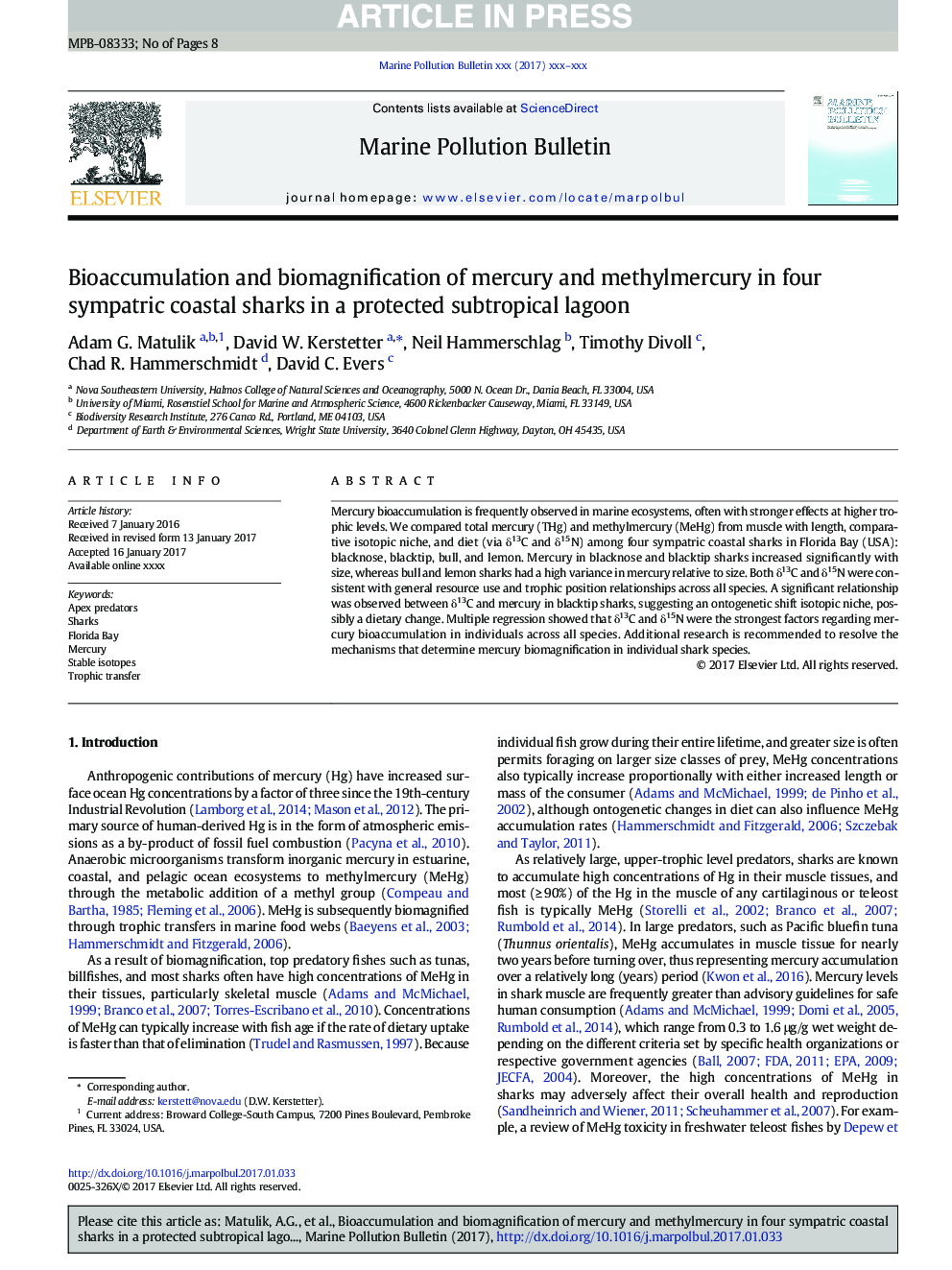| Article ID | Journal | Published Year | Pages | File Type |
|---|---|---|---|---|
| 5757615 | Marine Pollution Bulletin | 2017 | 8 Pages |
Abstract
Mercury bioaccumulation is frequently observed in marine ecosystems, often with stronger effects at higher trophic levels. We compared total mercury (THg) and methylmercury (MeHg) from muscle with length, comparative isotopic niche, and diet (via δ13C and δ15N) among four sympatric coastal sharks in Florida Bay (USA): blacknose, blacktip, bull, and lemon. Mercury in blacknose and blacktip sharks increased significantly with size, whereas bull and lemon sharks had a high variance in mercury relative to size. Both δ13C and δ15N were consistent with general resource use and trophic position relationships across all species. A significant relationship was observed between δ13C and mercury in blacktip sharks, suggesting an ontogenetic shift isotopic niche, possibly a dietary change. Multiple regression showed that δ13C and δ15N were the strongest factors regarding mercury bioaccumulation in individuals across all species. Additional research is recommended to resolve the mechanisms that determine mercury biomagnification in individual shark species.
Related Topics
Physical Sciences and Engineering
Earth and Planetary Sciences
Oceanography
Authors
Adam G. Matulik, David W. Kerstetter, Neil Hammerschlag, Timothy Divoll, Chad R. Hammerschmidt, David C. Evers,
